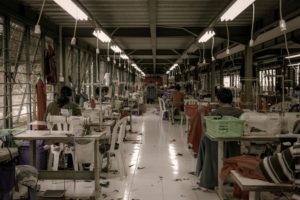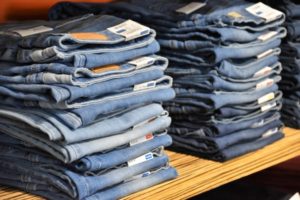Fast Fashion: What actually is it?
What is fast fashion?

Fast fashion emerged when clothing retailers realised customers wanted the latest trends as quickly and cheaply as possible. In response to this, manufacturers carry out mass production at low costs to boost their profits.
But nowadays, it’s not long until there is a new trend in the fashion world. Fast fashion is a never ending cycle of manufacturing one trend after another. In the world of fast fashion, speed is of the essence.
Manufacturers also keep costs low by having very basic warehouses. Unfortunately this means working conditions are poor.
In the late 1990s and early 2000s online shopping made its debut. Fast fashion retailers including Zara, H&M and Topshop were dominating the high streets. They took the latest cat walk trends a reproduced them quickly and cheaply. This meant everyone could afford the latest trends, so fast fashion was not going anywhere.
After the Rana Plaza clothing manufacturing complex in Bangladesh collapsed in 2013, killing over 1,000 workers, people started to question the clothing manufacturing industry.
But, while shoppers still want the latest trends quickly, sustainability and upcycling is now becoming ever more important.
What are the characteristics of a fast fashion brand?

Rio Lecatompessy on Unsplash
A fast fashion brand will have lots of styles to keep up with the latest trends. But, stock will often be limited due to new styles being pushed out frequently. The stock will also be made of cheap materials such as polyester. But, this means the clothes are not the best quality are are likely to degrade after a few wears and therefore get thrown away.
In regards to the manufacturing process, there is a very short turnaround time between the trend being seen on the catwalk and it appearing on the shelves in the high street stores. Retailers will use offshore manufacturing because labour is cheap. Workers are on low wages and working conditions are poor.
How do retailers show they are sustainable?

Jess @ Harper Sunday on Unsplash
In response to buying patterns changing, as more customers were seeking sustainable clothes, retailers jumped on the trend to entice shoppers through promoting how their company is being sustainable.
Shops such as H&M have released Conscious Collective and have a whole page on their website promoting how they are sustainable.
Change is at our core. And now it’s time to change fashion – H&M
Conscious points have been introduced for H&M shoppers to receive every time they purchase something from the Conscious range.
Shoppers can also recycle their old clothes in H&M stores and bring their own shopping bags to earn conscious points.
Why is fast fashion bad?

Fast fashion means quick production at low costs. But, this has a detrimental impact on the environment.
Levi Strauss is a jeans manufacturer and they estimate that a pair of their 501 jeans will produce the equivalent of 33.4kg of carbon dioxide across its entire lifespan.
Fast fashion brands have been found to use toxic chemicals, dangerous dyes, and synthetic fabrics.
Polyester is a popular fabric because it is cheap. But, it is derived from fossil fuels which contributes to global warming. Polyester can also shed microfibres that, when washed, end up as plastic in the oceans. Similarly, conventional cotton needs a lot of water and pesticides in developing countries. This therefore increases the risk of droughts and puts stress on water basins and competition for resources between companies and local communities.
The essence for speed means environmental areas such as land clearing, biodiversity and soil quality suffer too. With so many garments being produced rapidly, clothes are disposed of frequently by consumers. This creates textile waste which end up in landfill.
It is becoming more important for retailers to show how they are sustainable and eco-friendly to their customers. But, fast fashion is still happening, and who knows how long for.
Click here to read 10 ways to shop sustainably.
Featured image: @socialcut on Unsplash
